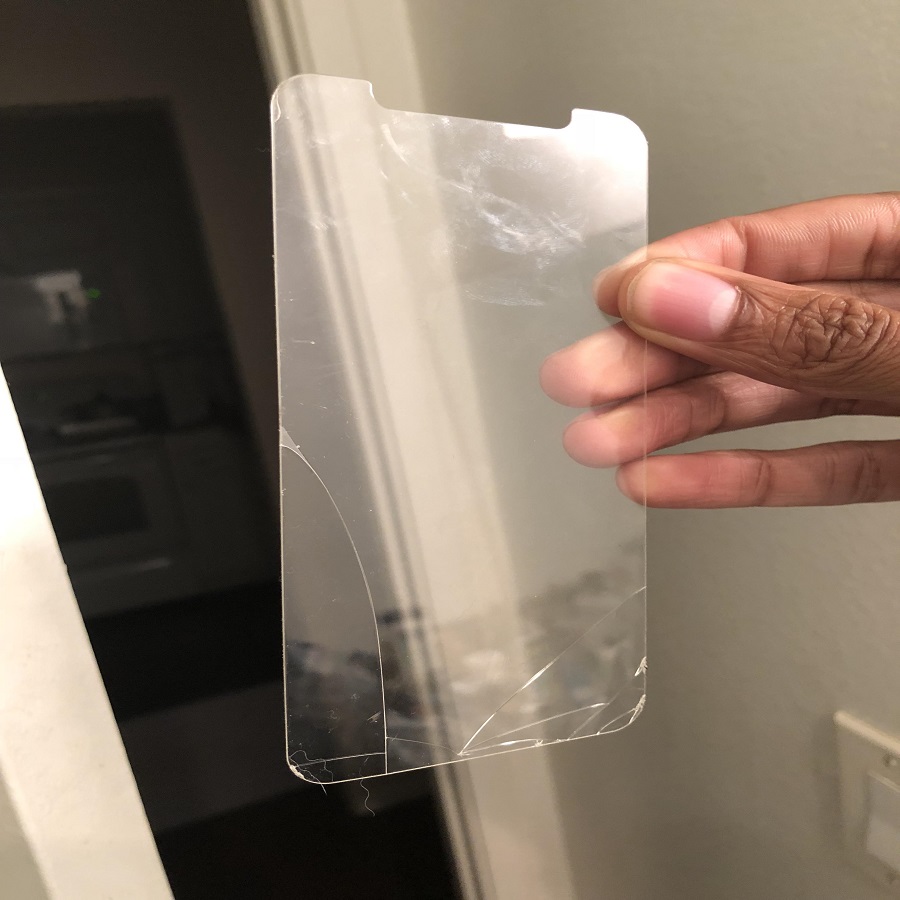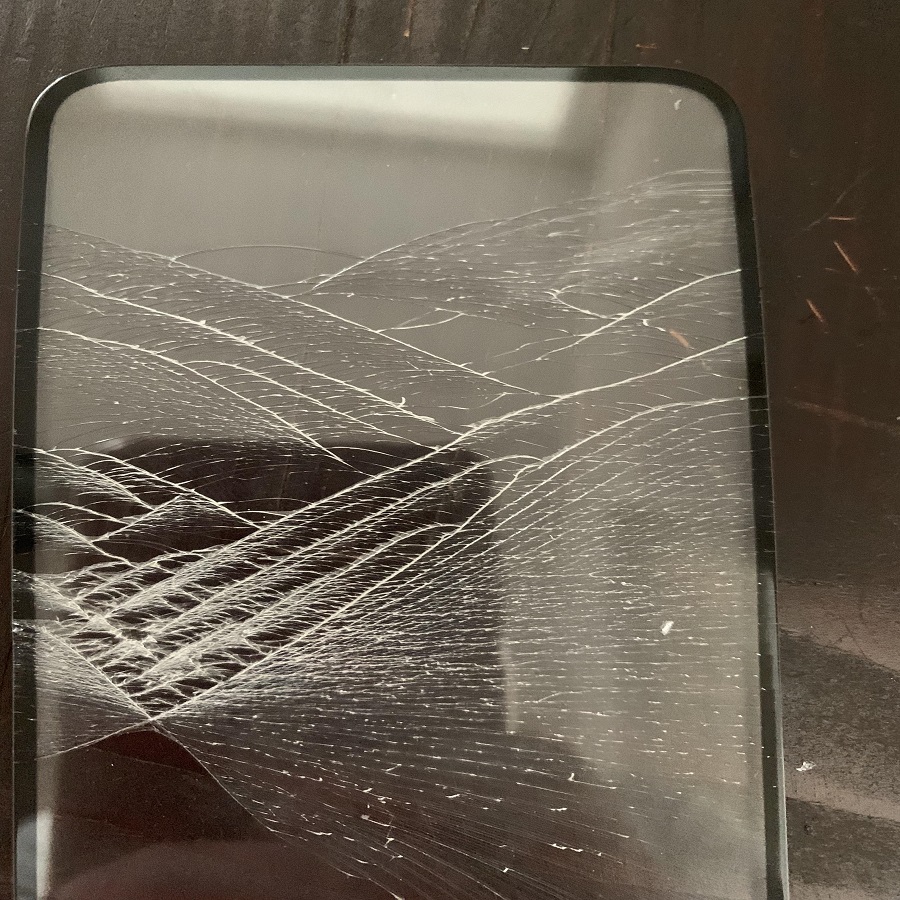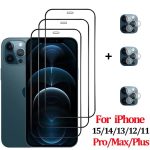Identifying the Signs of a Cracked Phone Screen
When faced with the dilemma of a potentially damaged phone, discerning whether your phone screen or just the screen protector is cracked can be crucial. Here are several signs that can help you identify if your phone screen itself is cracked:
- Look for an irregular pattern of lines or ‘spiderweb’ effects, which typically indicate a crack beneath the screen protector.
- Check for changes in screen functionality, such as unresponsive touch or discoloration in the display, which may suggest damage to the screen itself, not just the protector.
- Visible shards of glass or deep cracks that cannot be felt with a fingernail usually mean the actual screen is damaged.
Using a bright light can be a handy method to uncover any less obvious damages. If the irregularities remain after peeling off the screen protector, it’s likely your phone screen that has sustained damage. Additionally, if you spot any areas where the screen doesn’t light up—often referred to as ‘dead pixels’—this is another strong indicator of a broken phone screen. Similarly, any distortion in the display colors, particularly a rainbow effect, is a telltale sign.
Understanding these signs is the first step towards deciding the appropriate action, whether it’s replacing a broken screen protector or seeking repair services for a cracked phone screen. Properly identifying the issue can save you time and money, making it essential to be thorough in your assessment.

Characteristics of a Damaged Screen Protector
Recognizing a broken screen protector is crucial for your device. Look for these distinct features to tell if it’s the protector that’s damaged:
- Spider-web-like patterns are a common sign of a cracked protector.
- Small scratches or dents that are only superficial might also indicate a protector issue.
- If the surface feels smooth and the cracks seem to sit atop it, it’s likely the protector.
A protector is designed to take the brunt of impacts. Unlike the actual screen, it can’t display colors or pixels, so damages are purely physical. Fine lines that appear to be on the surface rather than deep within the display are typically on the protector. By tilting your phone, you might see these superficial marks catch the light.
When checking for damage, try to peel a corner of the protector gently. If the marks come off with it, then it’s the protector that’s broken. Remember to be gentle to avoid causing further damage.
A damaged protector should be replaced soon to maintain your phone’s protection. Leaving it cracked could risk dirt or moisture getting between it and the screen. Just be sure to replace it carefully after cleaning the screen to avoid dust or bubbles under the new protector.
Common Questions About Screen and Protector Damage
Dealing with a cracked screen or broken screen protector raises a lot of questions. Here, we address some common inquiries to help you make informed decisions about your next steps.
Can Toothpaste Fix a Broken Phone Screen?
Many people wonder if toothpaste can fix a phone screen. In brief, toothpaste might reduce the appearance of small scratches. It uses its mild abrasive quality to smooth out minor imperfections. However, it’s not a solution for deep cracks or shattered screens.
Is It Possible to Use Two Screen Protectors?
Yes, it is possible to use two screen protectors on your phone. This can offer extra protection. Ensure the first layer is clean before applying the second to avoid air bubbles or dust trapping.
What Should I Do If My Phone Screen Cracks?
Unfortunately, a cracked phone screen often requires a complete replacement. While repair shops offer services, replacing the screen is usually the most effective solution.
What Should I Do If Only My Screen Protector Is Cracked?
If the crack is only in the screen protector, simply replace it. First, remove the damaged protector carefully. Clean the screen thoroughly to prevent dust before applying a new protector.
These questions highlight the steps to take whether dealing with a damaged phone screen or a broken screen protector. Understanding your situation can drastically simplify the process of restoring your device.

Repair or Replace: What to Do with a Cracked Screen
Facing a cracked screen can be stressful. You’re left wondering, should you repair it or opt for a complete replacement? Here’s what to consider:
- Assess the Damage: A minor crack might only need a repair, while a severely shattered screen will likely require replacement.
- Cost Effectiveness: Repairs might be a good option for minor or recent models where replacement parts are readily available. However, for older models, replacing the device might be more cost-effective.
- Turnaround Time: Consider how quickly you need your phone functional again. Repairs can take time, whereas replacing a screen protector is instant.
- Warranty and Insurance: Check if your phone is under warranty or if you have insurance that covers screen damage.
- Resale Value: If you plan on selling your phone, a professional repair or replacement can maintain its value.
When your screen protector is broken, it’s a no-brainer: replace it. It’s affordable and can be done quickly. However, a cracked phone screen situates you between a rock and a hard place. If the damage is slight and the phone’s functionality isn’t compromised, a repair could suffice. For damage that affects phone operation, replacement is the best route. Always consider a professional service to ensure the replacement or repair upholds the integrity of your device.
Remember, continuing to use a phone with a damaged screen can lead to further issues, so address it as soon as possible. Replace single cracked screen protectors promptly to safeguard the phone screen beneath. If multiple broken screen protectors occur, you may want to evaluate the quality of protectors you’re using or the manner in which the device is being handled.
The Truth about DIY Fixes: Can Toothpaste Really Help?
When dealing with minor scratches on your phone’s screen, you might stumble upon the DIY toothpaste method. This home remedy involves using toothpaste’s mild abrasive quality to polish and minimize the appearance of small scratches. However, it’s crucial to understand that this makeshift fix isn’t a cure-all solution.
- Effectiveness: Toothpaste might smooth out very light scratches. It works by slightly wearing down the screen’s outer layer around the scratch, making it less noticeable.
- Limitations: For deep cracks or breaks, toothpaste is ineffective. It cannot restore broken glass or mend deep fissures that impair screen functionality.
- Application: Use a small dab of toothpaste on a cotton swab. Gently rub it over the scratch in a circular motion. Afterward, clean the screen with a soft cloth to remove any residue.
- Precautions: Ensure the toothpaste is non-gel and whitening types should be avoided as they can be more abrasive and potentially cause further damage.
To sum it up, while toothpaste might offer a temporary fix for minor scratches, it is not suitable for more significant damage. For persistent or deeper damage, professional screen repair services are recommended to ensure the integrity and functionality of your phone’s screen remain intact.

The Double Protector Debate: Is It Feasible?
When it comes to shielding your phone’s screen, some might consider double-layering screen protectors. This approach raises an important question – is it truly feasible or, more importantly, necessary? Let’s break it down:
- Effectiveness: Adding two screen protectors may increase shock absorption. This could be beneficial if your device often faces high-impact situations.
- Clarity and Touch Sensitivity: Multiple layers may reduce screen clarity and touch responsiveness. It’s vital for the protector to be compatible with your phone’s sensitivity.
- Installation: Applying one protector can be tricky enough. Aligning two perfectly to avoid bubbles or misalignment requires even more precision.
- Cost: While not overly expensive, buying two protectors instead of one is more costly. It might not be worth the extra expense given the potential drawbacks.
In the end, while it’s possible to double up on protectors, it’s generally unnecessary for everyday use. High-quality single protectors usually offer sufficient protection. For those in environments with higher risks of screen damage, considering a high-impact protector designed for such conditions is wiser.
Above all, make sure whatever method you choose doesn’t infringe on the phone’s functionality. After all, a well-protected phone that doesn’t function well is hardly useful. Always weigh the pros and cons of the double protector approach against the level of risk your phone regularly encounters.
Step-by-Step Guide to Replacing a Screen Protector
Replacing a broken screen protector is an essential skill for maintaining your phone’s condition. Here’s how to do it efficiently:
- Prepare Your Workspace: Find a clean, well-lit area to work in. Gather your materials like the new screen protector, a microfiber cloth, and a dust removal sticker.
- Remove the Old Protector: Start by slowly peeling off the damaged screen protector from one corner. Lift it gently across the phone to avoid bending the glass.
- Clean the Screen: After removing the protector, use the microfiber cloth to wipe the screen thoroughly. Ensure there is no dust, fingerprints, or smudges left on the screen.
- Apply the Dust Removal Sticker: Use the dust removal sticker to dab the screen. This action picks up any remaining tiny dust particles that the cloth might have missed.
- Align the New Protector: Peel off the protective layer from the new screen protector that faces the screen. Carefully align the protector with your phone’s screen edges and speaker, camera openings.
- Apply the Protector: Once aligned, gently place the protector on the screen. Start from one end and slowly proceed to the other. Ensure no air bubbles are trapped. Use a credit card or a squeegee to smooth out any bubbles.
- Final Touches: After the protector is applied, give it a final pass with the microfiber cloth to ensure it adheres properly and looks clean.
By following these steps, you can effectively replace a broken screen protector, ensuring continued protection for your phone’s screen against future damages.
Choosing the Best Protection for Your Phone Screen
Choosing the right protection for your phone screen is vital. It prevents damage and maintains functionality. Here are steps to choose the best screen protector:
- Consider Material: Screen protectors come in materials like tempered glass or plastic. Tempered glass offers better protection against drops and scratches.
- Evaluate Thickness: Thicker protectors may offer more protection. However, they can also affect touch sensitivity.
- Check Compatibility: Make sure the protector fits your phone model. It should align with camera and speaker openings.
- Assess Features: Some protectors have anti-glare or fingerprint-resistant features. Decide which features are most important to you.
- Read Reviews: Look for customer reviews and ratings. They can offer insights into the protector’s real-world performance.
- Budget: Determine your budget for a screen protector. Higher prices often mean better quality, but there are affordable options that still offer good protection.
Selecting the best screen protector involves balancing protection, functionality, and cost. While no protector is infallible, a high-quality one can extend the life of your phone screen significantly.


